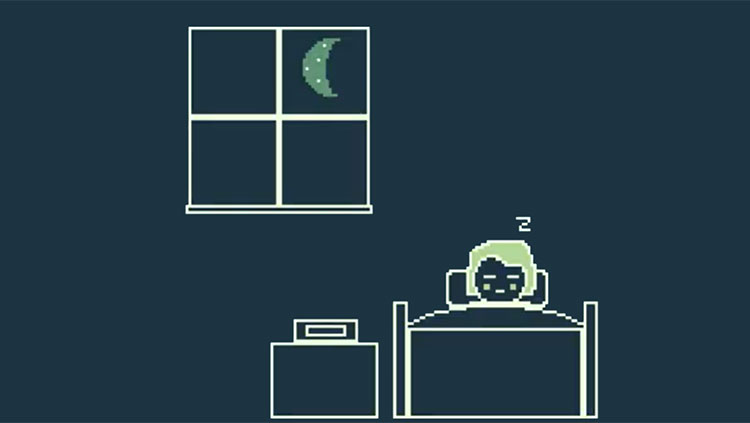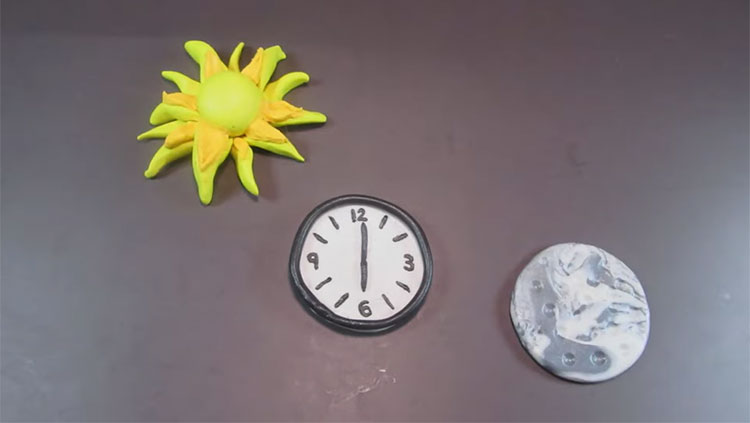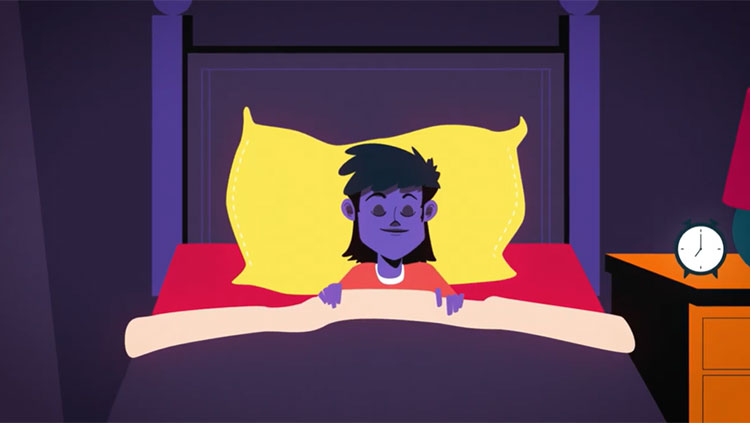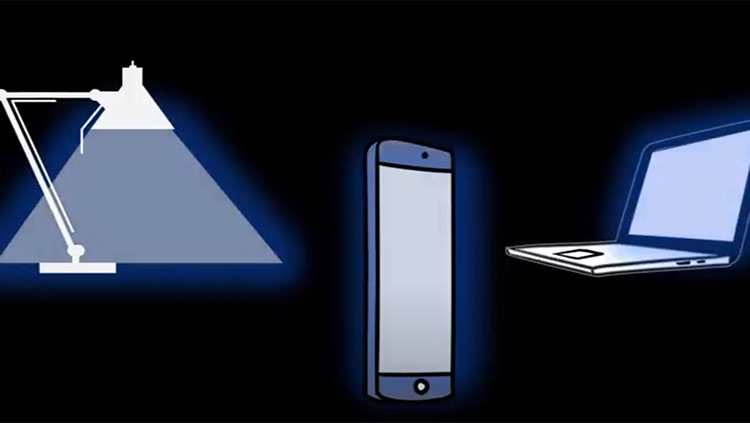Sleep Twitches Shape Babies' Growing Brains
- Published15 Jan 2021
- Author Calli McMurray
- Source BrainFacts/SfN
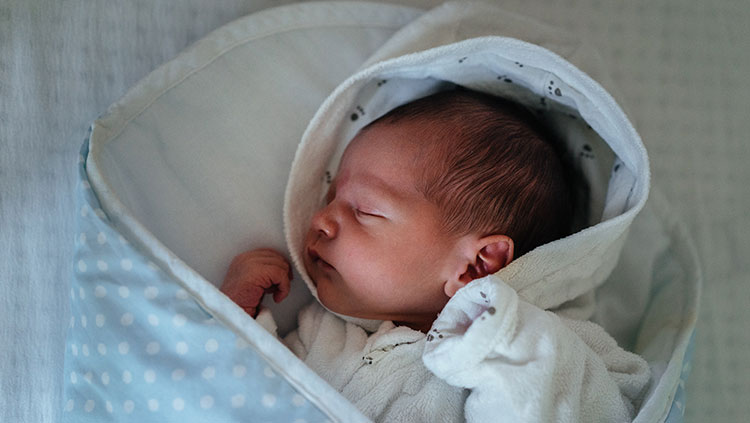
People watching a puppy or kitten twitch in its sleep may think it’s dreaming — perhaps about a wild chase. But twitches play a heftier role: they help shape the development of young brains.
Twitches occur during rapid eye movement (REM) sleep, a stage that dominates infants’ sleeping hours but only takes up about an hour of adult sleep. During REM sleep, motor areas in the brain generate seemingly random brief, jerky movements in face and limb muscles. Mark Blumberg, a professor of psychological and brain sciences at the University of Iowa, recorded rat pups’ brain activity as they twitch during sleep. The twitches trigger activity in the spinal cord, sensory and motor areas, and the hippocampus.
“Not only is the brain paying attention to the twitches, but it’s actually paying more attention to twitches than it is to wake movements,” Blumberg said in a presentation at the Society for Neuroscience’s Global Connectome conference on January 11.
Twitches serve as “self-stimulation,” providing sensory information to the brain when disconnected from the world, said Jan Born, professor of medical psychology and behavioral neurobiology at the University of Tübingen, Germany. This information allows the brain to “tune and advance the functional connectivity of the sensory and motor systems,” without the distraction of stimuli from the outside world, said Born.
Improvements in functional connectivity — the synchronization between brain regions as they work together — increase the likelihood regions will form connections. Sensory information sent back to the brain during a twitch may help wire the sensory and motor systems and dole out cortical space for different body parts.
Since REM sleep and twitching aid in the nervous system’s typical development, changes in these processes may signal when things go awry. By studying twitches in early development, researchers hope to parse out sleep abnormalities hinting at neurodevelopmental disorders to come, like autism spectrum disorder and cerebral palsy.
“That’s the first step: can we use [twitching] to diagnose?” said Blumberg. “And then the second step after that is, once we have some diagnostic insight, can we take that information and try to maximize sleep?”
Maximizing sleep is vital early in life: over one-half of premature babies develop a sensory processing disorder, and poor sleep may be to blame. In the neonatal intensive care unit (NICU), bright lights and loud machines disturb sleep during a crucial development stage. “The babies are constantly being sleep disrupted and deprived because they are being given lots of treatments that are not conducive to sleep,” said Blumberg.
Understanding how sleep shapes brain development could provide guidelines and best practices for protecting infants’ sleep, both in the NICU and once they return home.
CONTENT PROVIDED BY
BrainFacts/SfN
References
Blumberg, M. S., Dooley, J. C., & Sokoloff, G. (2020). The developing brain revealed during sleep. Physiology of Sleep, 15, 14–22. doi: 10.1016/j.cophys.2019.11.002
Sokoloff, G., Hickerson, M. M., Wen, R. Y., Tobias, M. E., McMurray, B., & Blumberg, M. S. (2020). Spatiotemporal organization of myoclonic twitching in sleeping human infants. Developmental Psychobiology, 62(6), 697–710. doi: 10.1002/dev.21954
What to Read Next
Also In Sleep
Trending
Popular articles on BrainFacts.org






